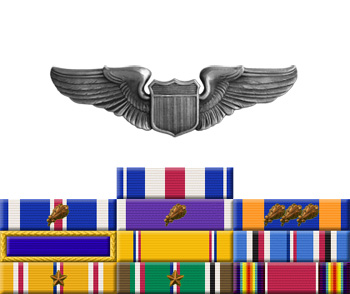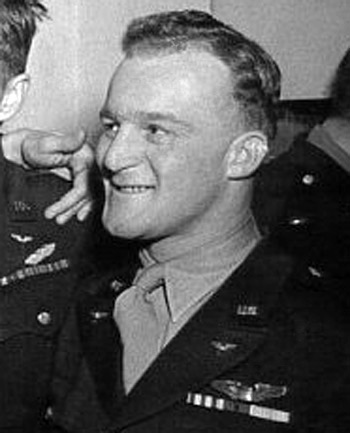
|
Edward J. Gignac |
 |
|||
| Rank, Service | ||||
Major O-4, U.S. Army Air Forces |
||||
| Veteran of: | ||||
|
||||
| Tribute: | ||||
Edward Gignac was born on September 7, 1918, in Lebanon, New Hampshire. He was a record ski jumper before the war and enlisted in the Aviation Cadet Program of the U.S. Army Air Corps on April 28, 1941. Gignac was commissioned a 2d Lt and awarded his pilot wings on December 12, 1941, and then flew P-39 Airacobra fighters with the 7th Pursuit Squadron and then the 40th Fighter Squadron of the 35th Fighter Group in Australia and New Guinea from May to November 1942, after being injured in a crash landing. He then joined the 320th Fighter Squadron of the 326th Fighter Group, where he trained in the P-47 Thunderbolt. Capt Gignac then joined the 21st Fighter Squadron (later renamed the 486th Fighter Squadron) of the 352nd Fighter Group and deployed with the squadron to England in July 1943. The group soon switched to the P-51 Mustang and Maj Gignac was credited with destroying 1.5 enemy aircraft in aerial combat before he was killed in action on June 7, 1944. He was buried at the Epinal American Cemetery in Epinal, France. |
||||
|
||||

